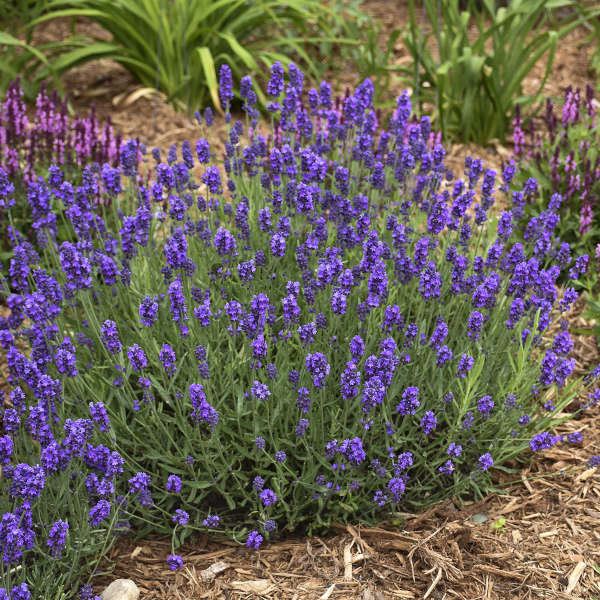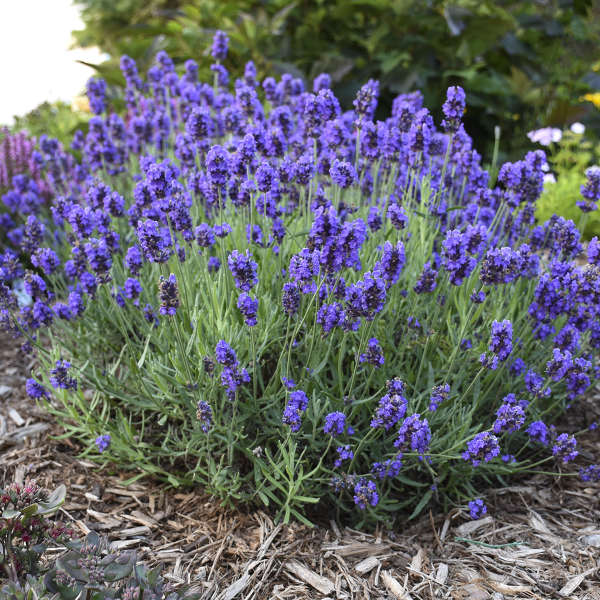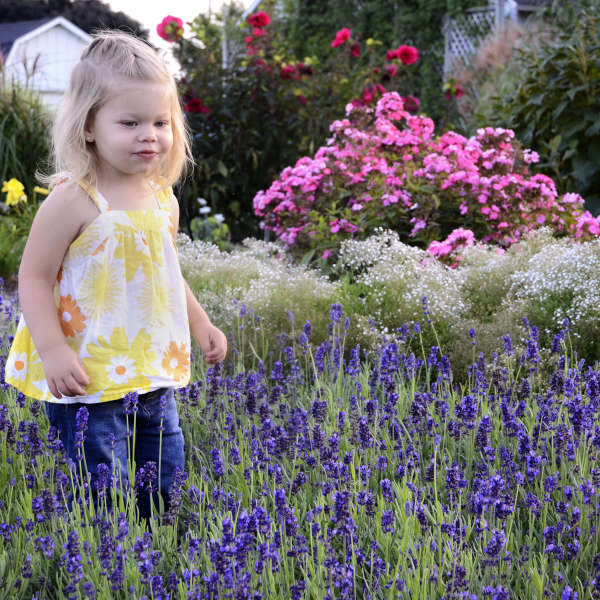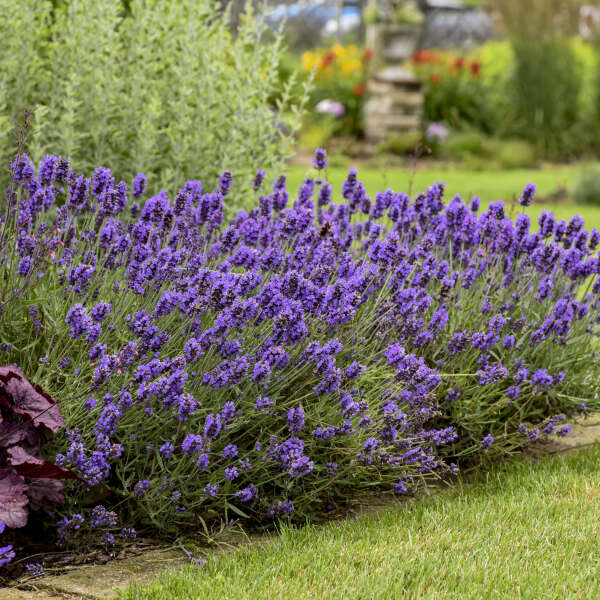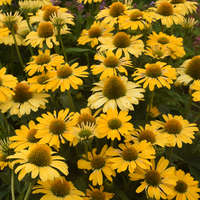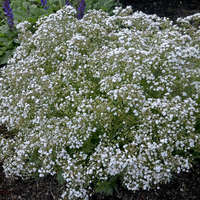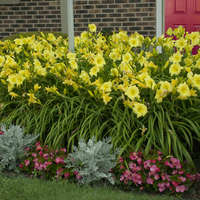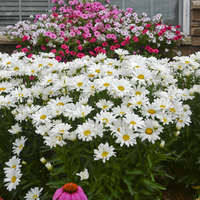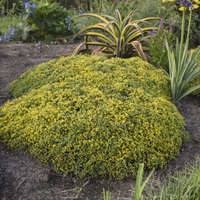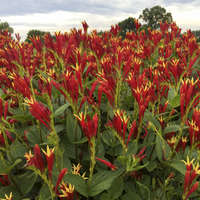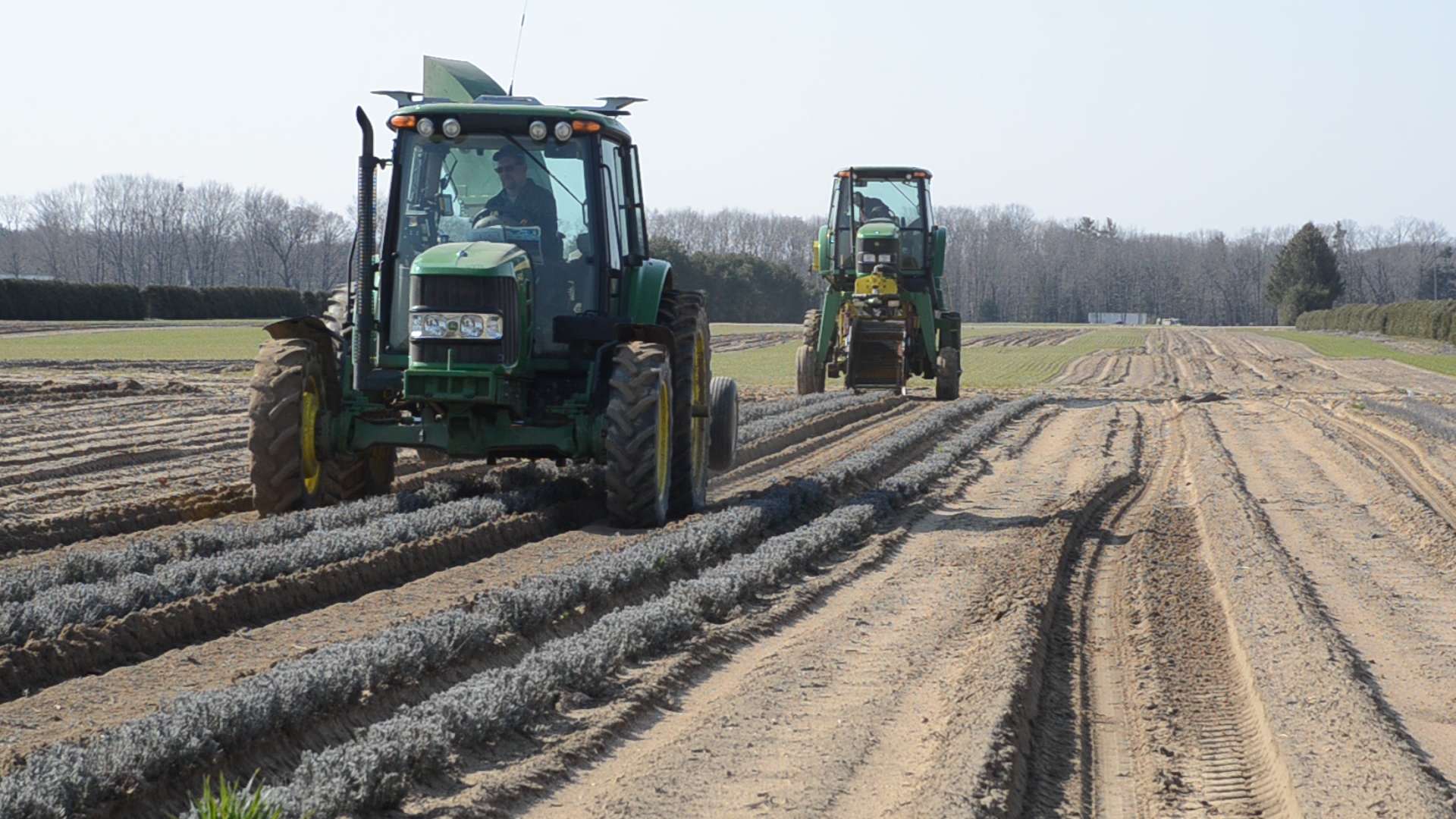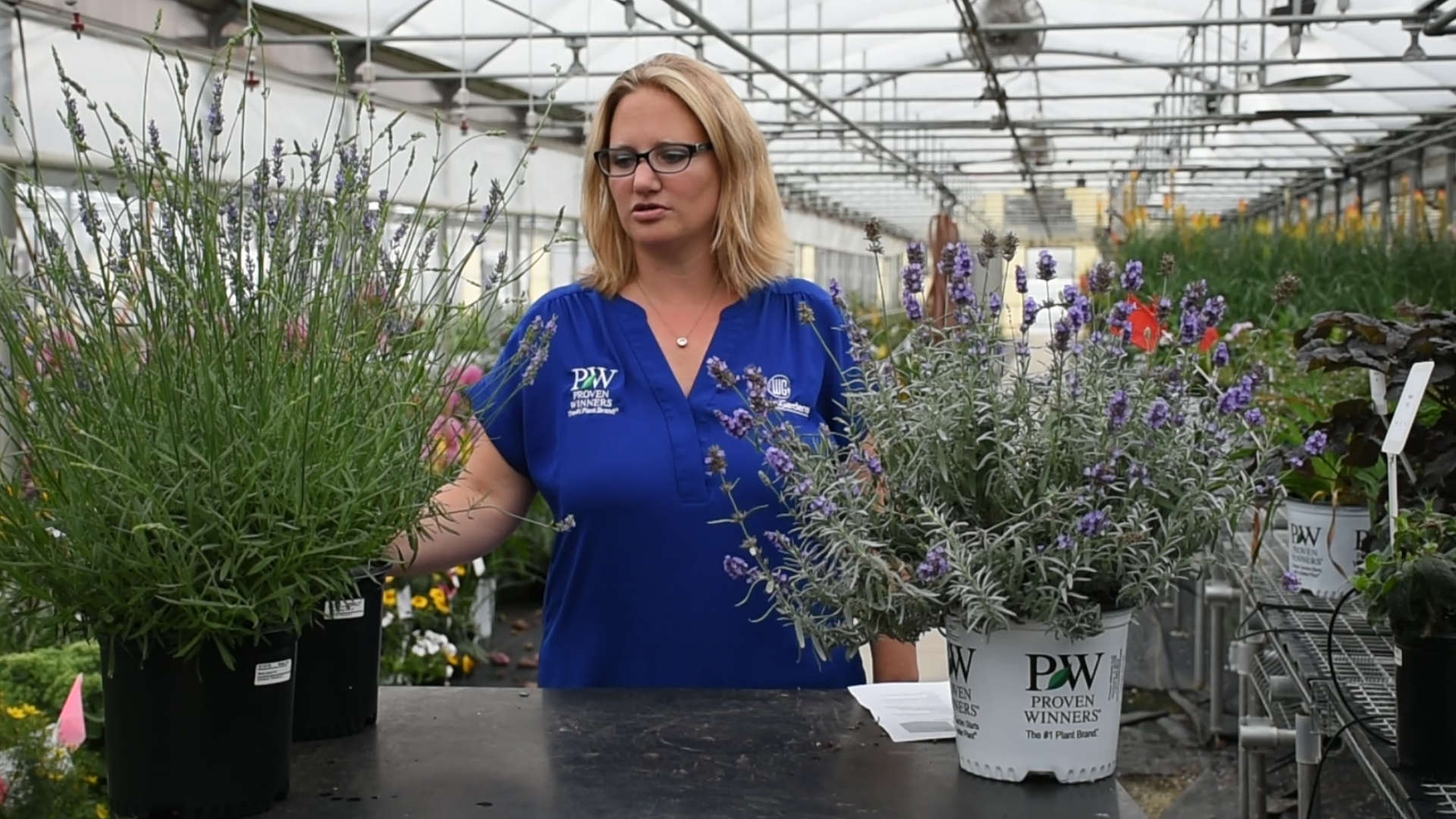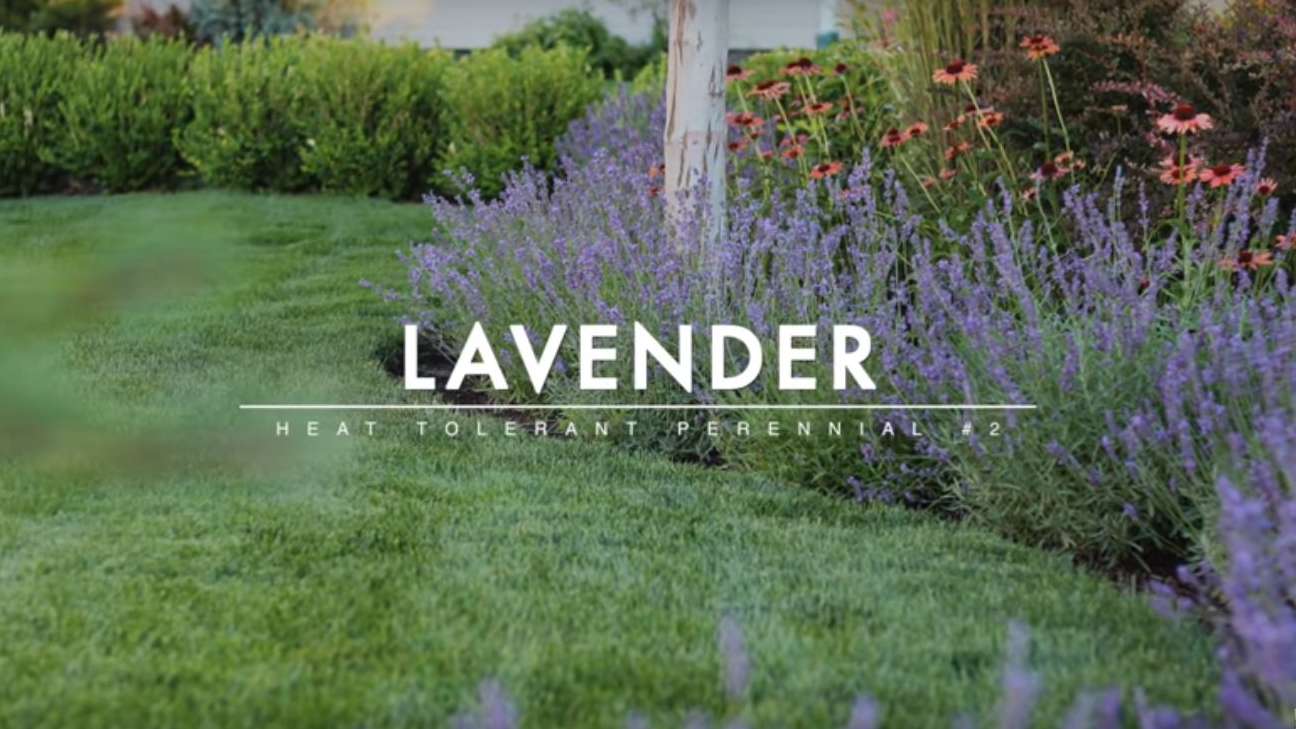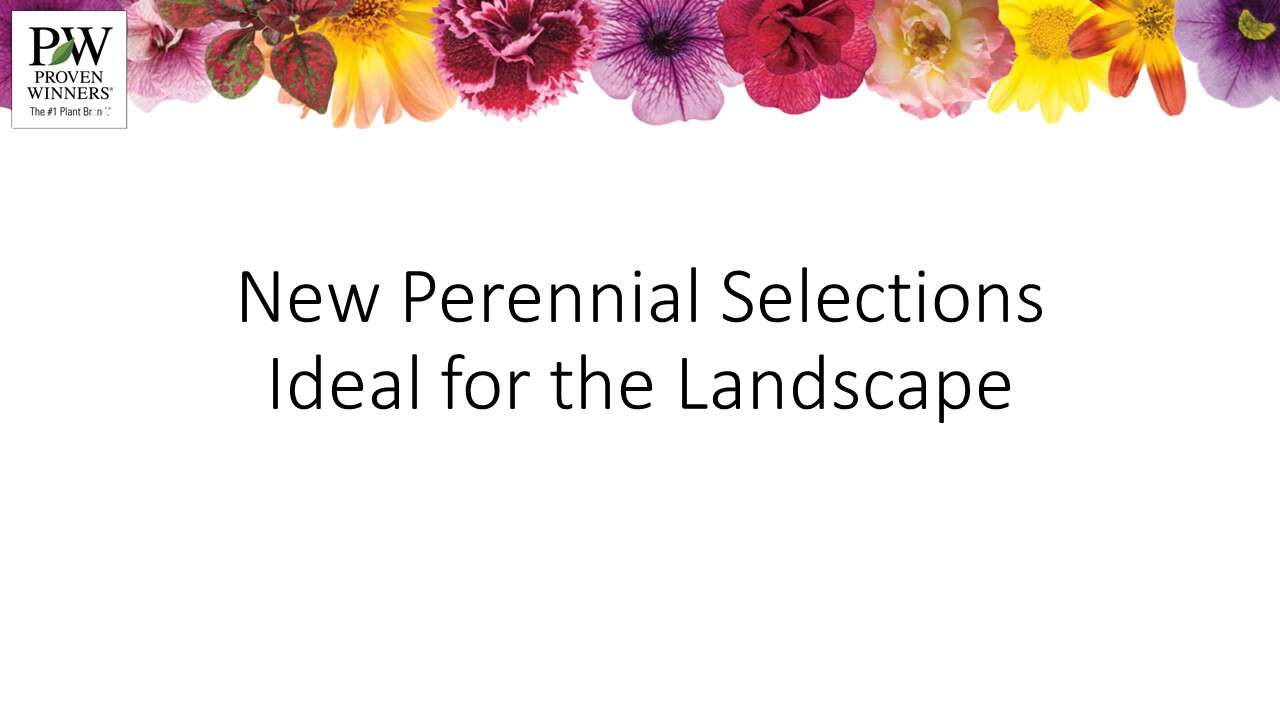Lavandula angustifolia SWEET ROMANCE® ('Kerlavangem' PP23001 CPBR4906)

Common Name: English Lavender
Gardeners around the world have been growing lavender for centuries for its intensely fragrant flowers, beautiful appearance, and ease of culture.
Along comes SWEET ROMANCE®, destined to become a favorite of growers and retailers because of its ability to bloom the first year with little or no vernalization. Additionally, it begins to flower a bit earlier in the season, typically in early summer and lasting into early fall.
The grey-green foliage forms a compact mound topped with plump, rich violet purple flower wands that are perfect for cutting for fresh and dried bouquets. Clusters of tiny flowers appear at the nodes up the stem in addition to the terminal inflorescence, adding color down into the plant.
